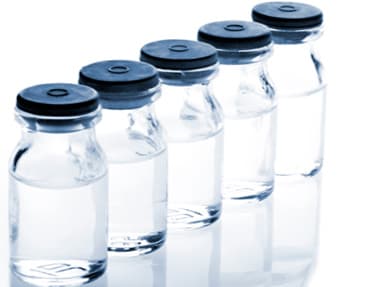Vaccine Adjuvants
 What is an adjuvant and why are adjuvants added to vaccines?
What is an adjuvant and why are adjuvants added to vaccines?
An adjuvant is an ingredient of a vaccine that helps create a stronger immune response in the patient’s body. In other words, adjuvants help vaccines work better. Some vaccines made from weakened or dead germs contain naturally occurring adjuvants and help the body produce a strong protective immune response. However, most vaccines developed today include just small components of germs, such as their proteins, rather than the entire virus or bacteria. These vaccines often must be made with adjuvants to ensure the body produces an immune response strong enough to protect the patient from the germ he or she is being vaccinated against.
Two adjuvants, aluminum and monophosphoryl lipid A, are used in some U.S. vaccines.
Aluminum gels or aluminum salts are vaccine ingredients that have been used in vaccines since the 1930s. Small amounts of aluminum are added to help the body build stronger immunity against the germ in the vaccine. Aluminum is one of the most common metals found in nature and is present in air, food, and water. The amount of aluminum present in vaccines is low and is regulated by the U.S. Food and Drug Administration (FDA).
Monophosphoryl lipid A has been used since 2009 in one vaccine in the US, Cervarix. This immune-boosting substance was isolated from the surface of bacteria. It has been tested for safety in tens of thousands of people and found to be safe.
Adjuvants have been used safely in vaccines for many decades.
Aluminum salts, such as aluminum hydroxide, aluminum phosphate, and aluminum potassium sulfate have been used safely in vaccines for more than 70 years. Aluminum salts were initially used in the 1930s, 1940s, and 1950s with diphtheria and tetanus vaccines after it was found that this addition strengthened the body’s immune response to these vaccines.
Monophosphoryl lipid A is a type of adjuvant that was developed more recently, as experts continue to increase their knowledge of how to stimulate certain specific elements of the body’s immune response to vaccines.
Adjuvants improve the body’s response to vaccination.
Vaccine adjuvants improve the body’s immune response and often allow for smaller amounts of an inactivated virus or bacteria to be used in a vaccine. See “Aluminum in Vaccines” for more information.
Only some vaccines contain adjuvants.
Aluminum is present in U.S. childhood vaccines that prevent hepatitis A, hepatitis B, diphtheria-tetanus-pertussis (DTaP, Tdap), Haemophilus influenzae type b (Hib), human papillomavirus (HPV) and pneumococcus infection.
Monophosphoryl lipid A is included in one human papillomavirus (HPV) vaccine, Cervarix.
One licensed pandemic influenza vaccine contains an adjuvant called AS03. It is included in the US pandemic influenza vaccine stockpile, but it is not available to the general public.
Fluad is a newly-licensed flu vaccine that contains MF59 as an adjuvant. MF59 is an oil-in-water emulsion that boosts the body’s immune response to this vaccine.
In some vaccines, the weakened or inactivated virus stimulates a strong immune response so no additional adjuvant is needed for it to be effective to protect against infections. In the United States, vaccines against measles, mumps, rubella, chickenpox, rotavirus, polio, and seasonal influenza vaccines do not contain added adjuvants.



